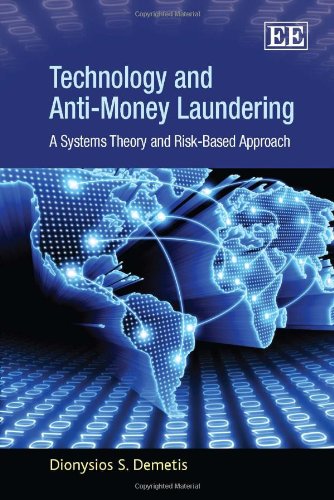

Most ebook files are in PDF format, so you can easily read them using various software such as Foxit Reader or directly on the Google Chrome browser.
Some ebook files are released by publishers in other formats such as .awz, .mobi, .epub, .fb2, etc. You may need to install specific software to read these formats on mobile/PC, such as Calibre.
Please read the tutorial at this link: https://ebookbell.com/faq
We offer FREE conversion to the popular formats you request; however, this may take some time. Therefore, right after payment, please email us, and we will try to provide the service as quickly as possible.
For some exceptional file formats or broken links (if any), please refrain from opening any disputes. Instead, email us first, and we will try to assist within a maximum of 6 hours.
EbookBell Team

5.0
78 reviews`This book avoids the usual trap of interminably listing AML war stories. Instead Dr. Demetis presents a solid theoretical foundation for AML research and practice. He gives a damning critique of the way so-called technological solutions are used uncritically by some AML professionals, and analyses the risk-based approach, describing its problems and ways of avoiding them. He presents a fascinating in-depth case study of a financial institution, and a short case of a bank using technology to improve its True Positive Rate substantially to 17 per cent.' - Ian Angell, London School of Economics, UK
`Dr Demetis makes a great contribution to our understanding of anti-money laundering at both a systems and practical level. [He] writes as someone who not only thinks deeply about these issues but, as the in-depth case examples show, has tried to see how far technology can address some audacious goals. Readers will learn that while risk-based approaches to anti-money laundering have been an interesting regulatory development, practical implementation, despite the hype of technology vendors, is "still at a primordial state".' - Michael Mainelli, Gresham College and Z/YEN Group, UK
This insightful book examines the influence of information systems on anti-money laundering (AML). It builds on systems theory in order to develop a coherent theoretical framework that can be used for AML research.
By using a case study of a major financial institution in the EU-area, a number of technological influences on AML are deconstructed and are used to examine the role that technology plays within AML. The book provides a systems theoretical description of the effects of technology on AML and offers considerations on the risk-based approach - the most important contemporary evolution within regulatory initiatives on AML and terrorism financing.
Technology and Anti-Money Laundering will appeal to researchers of financial crime and AML as well as those interested in information systems and systems theory. A number of considerations for practitioners are also discussed, including the risk-based approach and the integration of AML-technology in financial institutions, as well as an important data-mining application. Money Laundering Reporting Officers (MLROs) in financial institutions and central bankers will also find much of interest in this book.